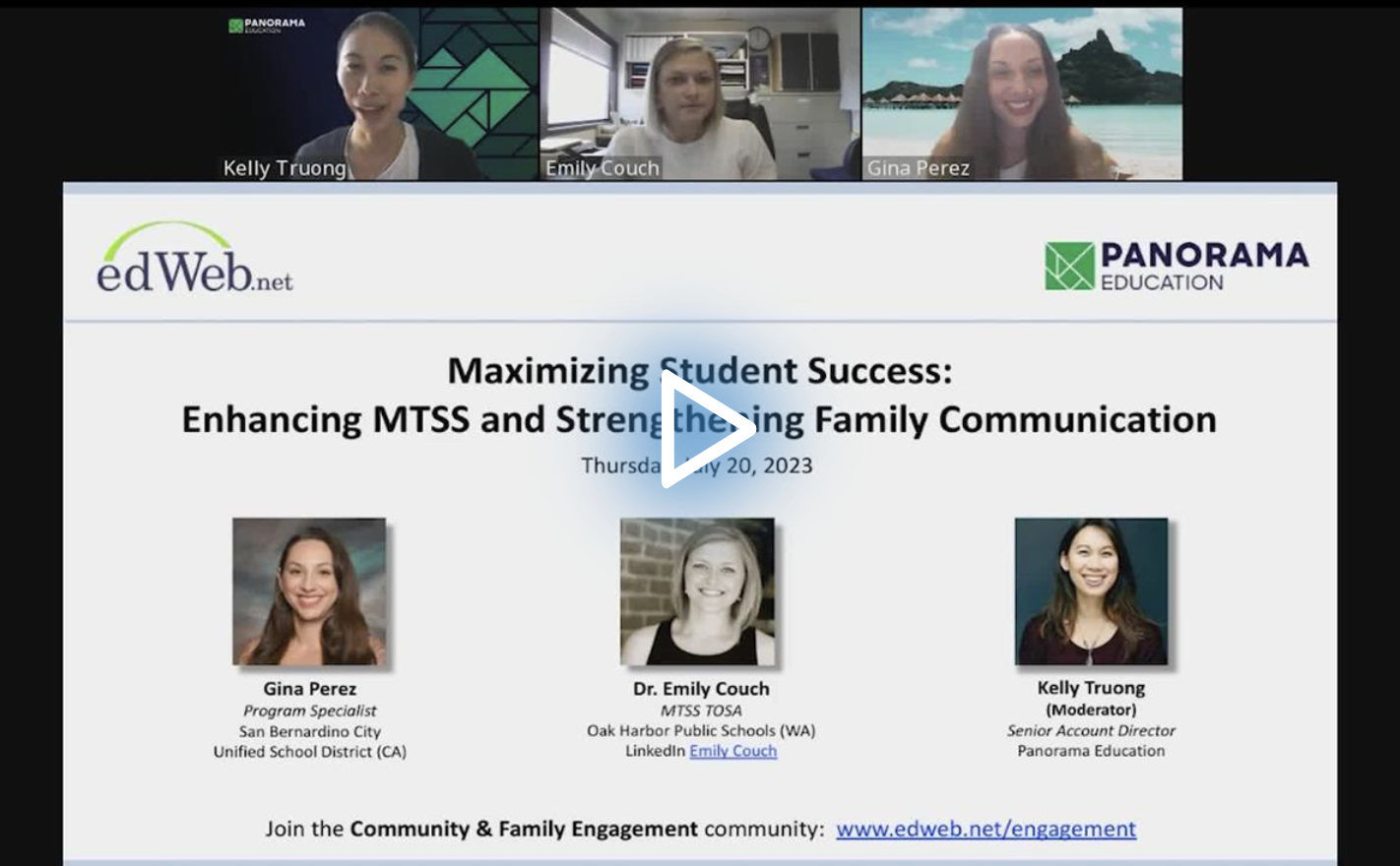Family Engagement: Empowerment, Achievement, Partnerships, Unity
Watch the Recording Listen to the Podcast
Research shows that strong relationships with families optimize student progress. Luckily, family involvement is an essential element of Multi-Tiered Systems of Support (MTSS) that helps parents and caregivers support their children’s academic journey.
Involving families as partners requires a purposeful process resulting in a collaborative framework, explained school leaders participating in the edLeader Panel “Maximizing Student Success: Enhancing MTSS and Strengthening Family Communication.” The panelists shared steps they took to keep communication lines open, build trusting relationships, and involve families in decision-making processes.
Look to the Community First
Before implementing a “well-meaning” family engagement strategy, find out from the community how families can be best supported to inform a responsive initiative. That is how the San Bernardino City Unified School District (CA) launched its efforts, explained family engagement program specialist Gina Perez.
Creating a family engagement plan emerged from the district’s action plan and first required learning from community stakeholders. In town hall meetings, the district identified basic needs and wants to meet first before addressing school issues. It was a call to action, emphasized Perez, to develop trusting partnerships, organize resources, and create opportunities to cultivate a resilient and thriving community at all school sites.
The district readily accepted the challenge. It established a parent engagement center at every site, each led by a parent liaison who is representative of the primarily Hispanic families in the community, deeply familiar with the school and the children, and can directly serve parents.
Parent liaisons also:
- Monitor parent centers, safe spaces where parents and families can, for example, read to their children, eat a meal, or use a laptop
- Assist with home visits to find out why students are not attending school
- Help to build parent advisory groups at schools and district offices
- Plan and present workshops to school stakeholders to further their understanding of parents’ and community cultural perspectives
Family engagement program specialists, like Perez, coach parent liaisons, assist them with school and district events, and help them develop and implement workshops and projects.
The district also designed professional development to:
- Support teachers and the school community in engaging and communicating with families (particularly encouraging them in school opportunities to address needs toward increased student well-being and academic achievement)
- Help families maneuver the education systems, ask the “right” questions, complete forms, etc., to support their children’s academic and career journeys
Mapping Out a Plan
It takes a lot of time and planning to design and implement family engagement initiatives, as Oak Harbor Public Schools (WA) discovered during its 18-month process to launch its MTSS work, explained Dr. Emily Couch, a district MTSS teacher on special assignment.
The district formed a multi-stakeholder MTSS team—parents and caregivers, community partners and non-profits, school board members, government officials, and local law enforcement—gathering their perspectives through surveys, focus groups, and anecdotal feedback. Findings were shared with the district to identify what was working and what to prioritize.
Drawing on the findings, the district produced a “five-ingredient recipe”—positive environments, connections, teaching and learning, student empowerment, and access to support—with each ingredient reflecting the enriched experiences students need to thrive in school and the community. Community, family, parent, and caregiver communication, feedback, collaboration, and equity and inclusion are incorporated into the ingredients.
The ingredients are the foundation of the district’s strategic planning process centered on determining and achieving student outcomes. Relationship building, access, and enhanced school communication are primary considerations across school sites.
Additionally, the district seeks to expand relationships with already-engaged parents and caregivers by growing access to programs (for example, live streaming college and career nights on Facebook).
Perez and Couch underscored how their districts’ approaches to meaningful family engagement acknowledge parents and caregivers as valuable partners in the education system. Forming empowering relationships with parents and caregivers leads to more successful student outcomes, higher graduation rates, and lower absenteeism and dropout rates.
Learn more about this edWeb broadcast, Maximizing Student Success: Enhancing MTSS and Strengthening Family Communication, sponsored by Panorama Education.
Watch the Recording Listen to the Podcast
Join the Community
Community & Family Engagement is a free professional learning community where district and school administrators, teachers, counselors, support staff, and all educators can connect and share ideas, practices, and resources to support students and families and engage the community in helping students learn and thrive.

Blog post by Michele Israel, based on this edLeader Panel.





Comments are closed.